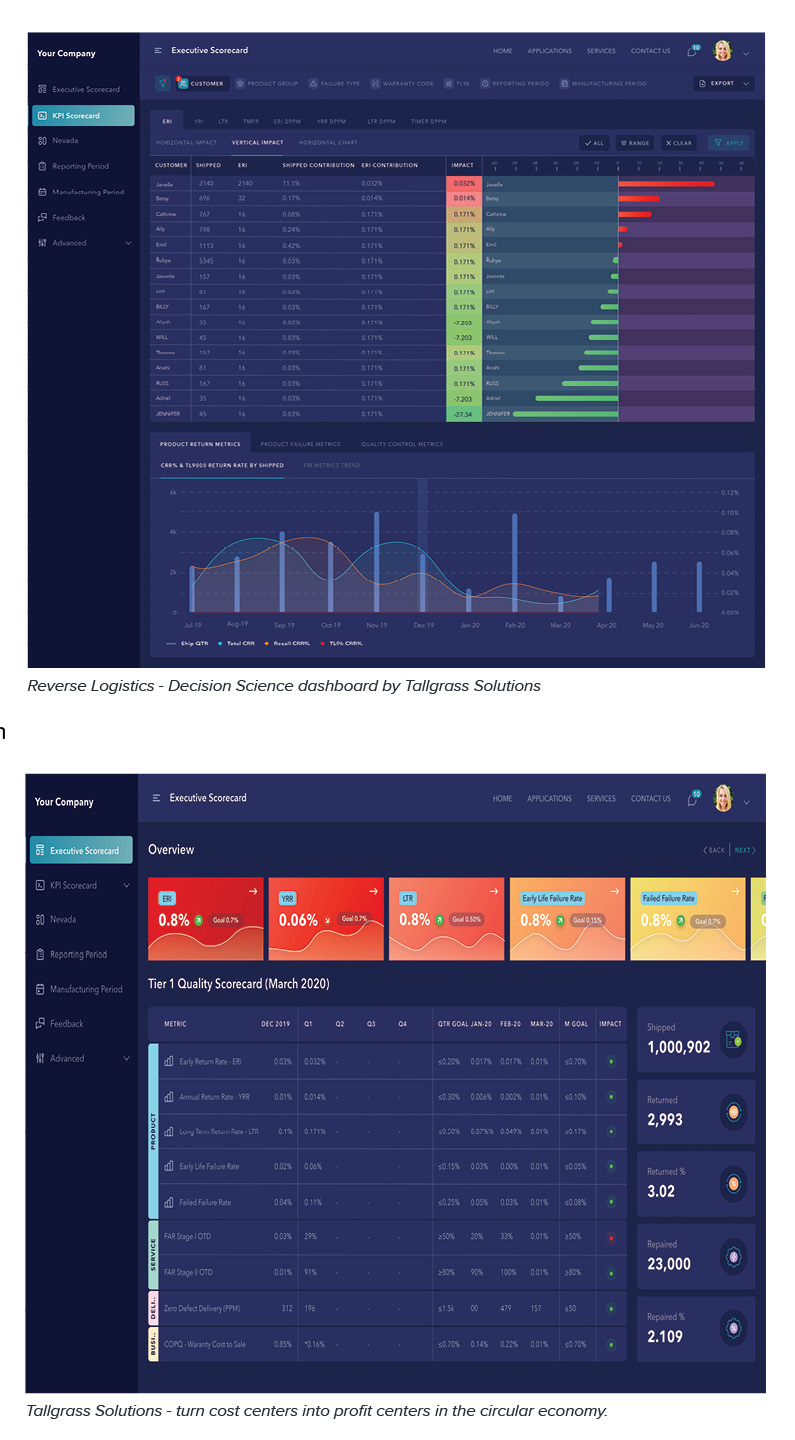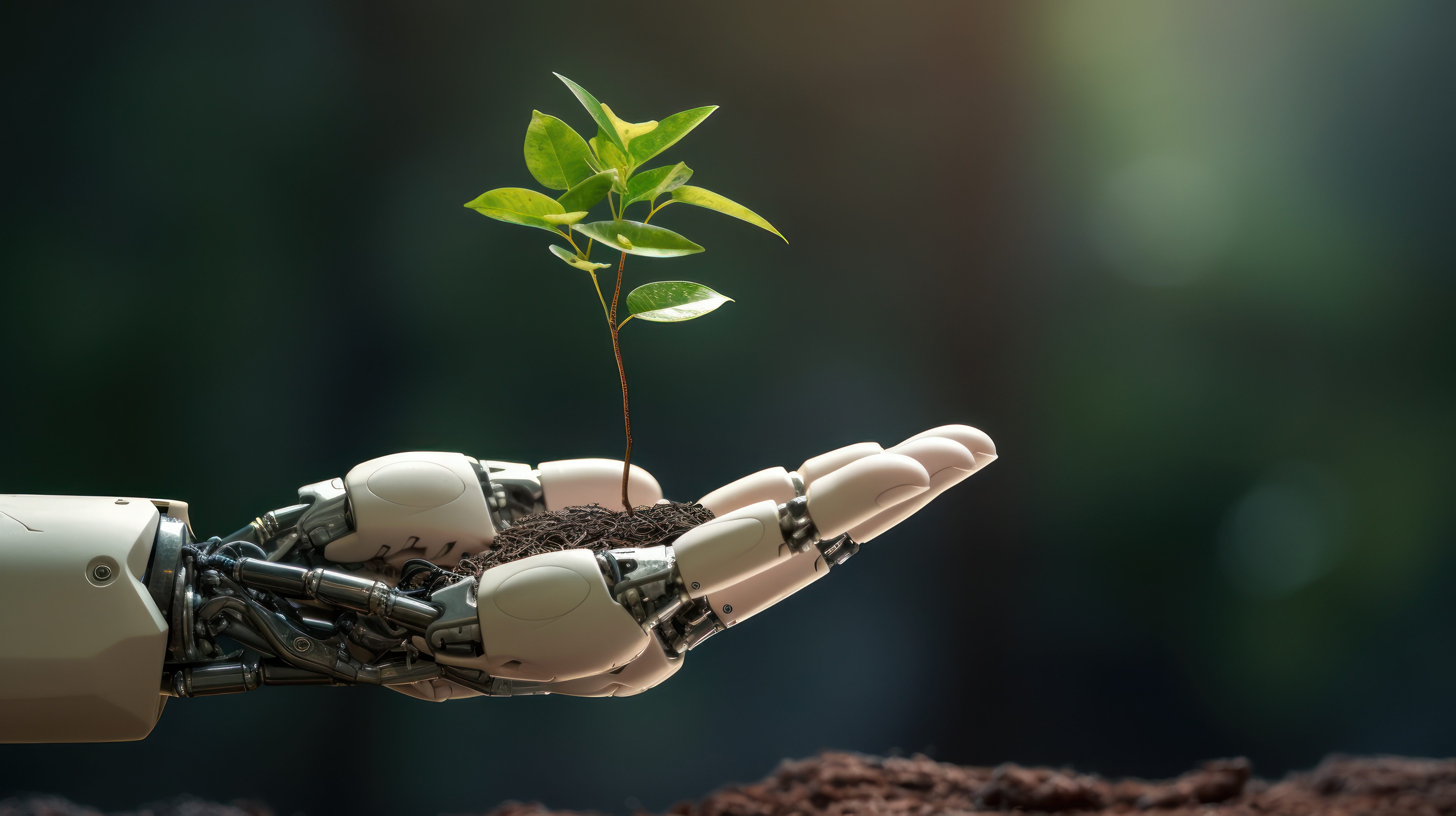The Ecology of Generative AI
By Ralph Sijl, Tallgrass AI
The ecology of generative AI, particularly when intertwined with the intricate systems of Returns Management and integrated with Reverse Logistics into the broader frameworks of Regenerative Design in product design, represents a complex, multidimensional space where innovation, efficiency, and accountability are paramount. This ecology is not merely about the technology itself but how it can be leveraged to foster a sustainable, circular economy through the intelligent management of resources, products, and materials across their entire lifecycle.
The concept of Regenerative Living Architecture (RLA), while primarily associated with the built environment, extends its transformative ethos into the realm of product design. Within product design one might be more familiar with the term Regenerative Design. At its core, RLA in product design embodies the creation of products that not only minimize harm to the environment but actively contribute to ecological and social regeneration. This approach aligns with broader sustainability and circular economy goals, challenging designers to rethink the lifecycle of products from a linear model of consumption to a circular one where every stage of a product’s life is designed for positive environmental and social impact.
Principles of Regenerative Design in Product Design
- Holistic Lifecycle Thinking: Products are designed considering their entire lifecycle, from the sourcing of materials to manufacturing, use, and eventual end-of-life. This approach aims to ensure that products can be easily disassembled, recycled, or biodegraded, thus contributing to the regeneration of natural systems.
- Positive Environmental Impact: Similar to its architectural counterpart, RLA in product design focuses on creating items that have a net-positive impact on the environment. This could involve using materials that sequester carbon, adopting manufacturing processes that restore ecosystems, or creating products that purify air or water during their use.
- Adaptability and Longevity: Products are designed for durability and adaptability, allowing them to serve their purpose over a long lifespan and adapt to the user's changing needs. This reduces the need for frequent replacements and the waste associated with it.
- Social Regeneration: Regenerative Design -infused product design also considers the social impact of products, aiming to enhance community well-being, support fair labor practices, and empower users with tools for a sustainable lifestyle.
- Integration with Natural Systems: Products are designed to function in harmony with natural systems, either by mimicking natural processes or by integrating into ecological cycles in beneficial ways.
Generative AI: A Catalyst for Innovation in Returns Management and Reverse Logistics
In the context of Returns Management, generative AI can offer unprecedented insights and optimizations, enabling businesses to streamline processes, reduce waste, and enhance customer satisfaction. When these capabilities are extended to the larger Reverse Logistics world, the potential for transformative impact on the circular economy becomes apparent. However, realizing these potential demands creative solutions in several key areas:

Data Management by Tallgrass.Ai: The Foundation of Intelligent Systems
- Integrated Data Ecosystems: Developing integrated data ecosystems that seamlessly combine information from Returns Management systems and Reverse Logistics data providing product design solutions for product design improvements. This integration allows for a holistic view of materials and products throughout their lifecycle, from production and use to return, refurbishment, and recycling.
- Real-Time Data Analysis: Leveraging generative AI for real-time analysis of return patterns, material health, and logistic efficiencies. This enables predictive modeling to reduce waste and optimize resource allocation, ensuring materials and products are redirected where they can be most valuable.
- Data Privacy and Security: Implementing robust data governance frameworks to ensure the privacy and security of consumer and operational data. This is critical in maintaining trust and adhering to regulatory requirements, particularly when dealing with personal consumer or boundary partner information in the returns process.
Process Optimization: Enhancing Efficiency and Sustainability
- Automating Returns and Reverse Logistics: Employing generative AI to automate decision-making in the returns process, determining the most sustainable and cost-effective routes for returned products, whether that be refurbishment, recycling, or redistribution.
- Design for Regeneration: Utilizing AI-driven insights to inform RLA design principles, focusing on modularity, adaptability, and material reusability. This creates living and operational spaces that are inherently aligned with circular economy principles, facilitating easier refurbishment, upgrade, and recycling of materials and components.
- Lifecycle Impact Reduction: Implementing advanced analytics to assess and optimize the environmental impact of products and materials throughout their entire lifecycle. This involves identifying opportunities to reduce energy consumption, material waste, and emissions at every stage, from initial design through to end-of-life management.
SLAs: Ensuring Accountability and Alignment with Circular Economy Goals
- Clear Sustainability Metrics: Establishing or updating SLAs with clear, measurable sustainability metrics for partners and vendors, ensuring that all parties are committed to and accountable for achieving circular economy objectives. This includes metrics for reducing waste, increasing recycling rates, and improving the overall sustainability of products and materials.
- Transparency and Reporting: Mandating transparency and regular reporting in SLAs, ensuring that data on returns, recycling rates, and environmental impacts are openly shared. This fosters a culture of accountability and continuous improvement among all stakeholders.
- Collaborative Innovation: Encouraging collaborative innovation through SLAs, creating ecosystems where businesses, suppliers, and logistics providers work together to develop new solutions for material reuse, product refurbishment, and waste reduction.
- Leverage SLA’s: , SLAs become a tool not only for enforcing accountability but also for fostering collaboration between businesses and their reverse logistics partners, driving innovation, and identifying new revenue streams within the circular economy framework. Ultimately, by leveraging SLAs as a strategic component in reverse logistics, companies can align economic objectives with environmental stewardship, transitioning from viewing returns management as a necessary cost to recognizing it as a valuable opportunity for sustainable growth and profitability.
 The interconnection of generative AI with Returns Management, and Reverse Logistics presents an opportunity to redefine the essence of the circular economy from the bottom up. Through creative solutions in data management, process optimization, and stringent SLAs, we can ensure that these systems not only operate more efficiently but also contribute to a more sustainable, regenerative world. The journey towards this vision requires concerted effort, innovation, and a shared commitment to sustainability and accountability at every level of the supply chain and product lifecycle.
The interconnection of generative AI with Returns Management, and Reverse Logistics presents an opportunity to redefine the essence of the circular economy from the bottom up. Through creative solutions in data management, process optimization, and stringent SLAs, we can ensure that these systems not only operate more efficiently but also contribute to a more sustainable, regenerative world. The journey towards this vision requires concerted effort, innovation, and a shared commitment to sustainability and accountability at every level of the supply chain and product lifecycle.
Let us know how we can help you leverage your data, make the right decisions and turn your cost center into a profit center.
 Ralph Sijl
Ralph SijlRalph is a strategic executive who leverages market and competitive intelligence to craft data-driven B2B strategies, resulting in impactful business development and sales efforts.
By empowering teams and fostering inclusive cultures, he provides direction, coaching, and the tools necessary for individuals to excel.
As an innovative thinker and business owner, Ralph values both entrepreneurship and "intrapreneurship," constantly seeking unconventional ways to enhance strategies, partnerships, and growth. Ralph currently serves as partner at Tallgrass Solutions with a main focus on Business Development and Operational Process Optimization.